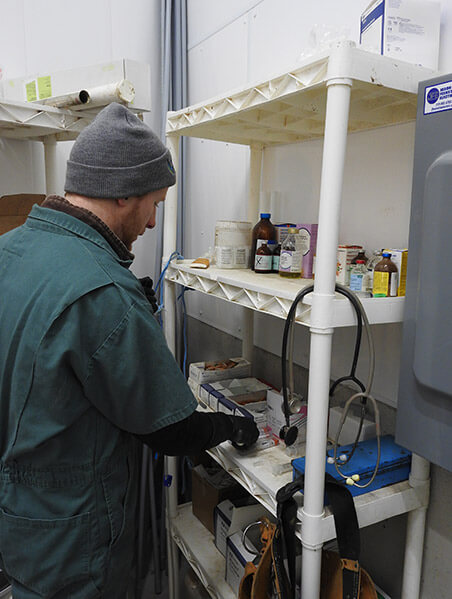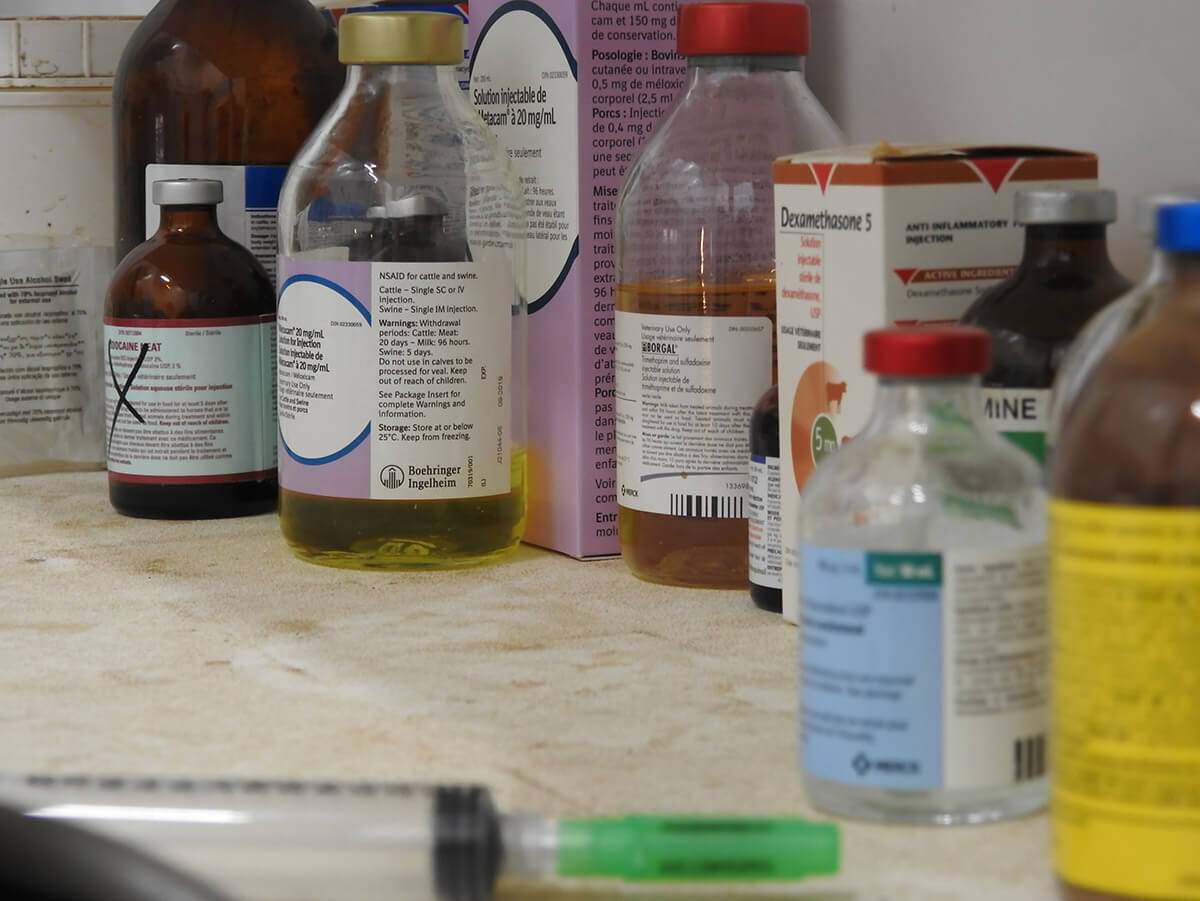Section 3 | Proper Handling, Storage, and Use of Livestock Medicines
Page 14 /
Care, Cleanliness, and Contamination
We Must Take Care When Giving Injections
Each time an injection is given to an animal, it has the potential to cause harm. It could result in:
- Pain and discomfort for the animal
- Creation of scar tissue and abscesses (collections of pus)
- These visible surface injection site lesions and bruises are especially evident at slaughter where portions of the carcass may need to be trimmed and discarded. This leads to significant costs to the producers (in lost carcass pay weight) and packers (if the surrounding cuts are being damaged)
- Delayed drug absorption
- The absorption of the drug may also be affected if the drug is given using an improper route. This could lead to an insufficient drug concentration at the disease site and apparent failure of therapy. It could also lead to the drug staying in the body for a much longer time requiring longer withdrawal times and could contribute to the presence of illegal residues
Cleanliness and Contamination
The environment on farms is difficult to maintain total cleanliness and the danger of introducing microbes by injection is always present. As a result, every effort should be made to avoid the contamination of products and injection sites.
How Do Products Become Contaminated?
Most injectable products are sold in large multi-dose containers. Taking repeated doses from these containers increases the risk of contamination with microbes.
The following are examples of some of the ways that containers could get contaminated:
- Same needle used to inject animal is used to withdraw product from the bottle without disinfection in between
- Dirty bottle stoppers
- Leaving needles sticking in bottle tops
)
Source: ACER Consulting Ltd.

Source: ACER Consulting Ltd.
Cleanliness of Injection Technique
When administering an injectable product to an animal, it is important to avoid improper techniques that will contaminate the injection site. A contaminated injection site could lead to the development of injection site abscesses, an ineffective treatment or unnecessary pain to the animal.
Here are the keys to minimize contamination at the injection site:
- Use a new needle for each animal
- Avoid giving injections into sites that are contaminated with dirt or manure
- Avoid prolonged use of disposable syringes
- Use appropriate disinfectant for cleaning needles, syringes and intravenous sets
-
- Disinfecting solutions include quaternary ammonium compounds or alcohol. It is important to not use these solutions prior to the administration of live vaccines as they will inactivate them
- Use fresh disinfectant solutions for cleaning equipment
New needles are important to:
- Prevent disease transmission
- Reduce the risk of injection site infection
- Decrease tissue damage from dull needles
)
Broken Needles
Needles breaking during the administration of a livestock medicines are of greatest concern when the needle shaft remains in the animal. When this occurs, it is imperative to remove the broken needle immediately which may require the help of a veterinarian.
Some strategies to prevent broken needles include:
- Pick the correct gauge of needle
- Restrain the animal properly
- Discard bent needles
- Avoid using the same needle for multiple injections
- Place the needle into the animal and then attach the syringe